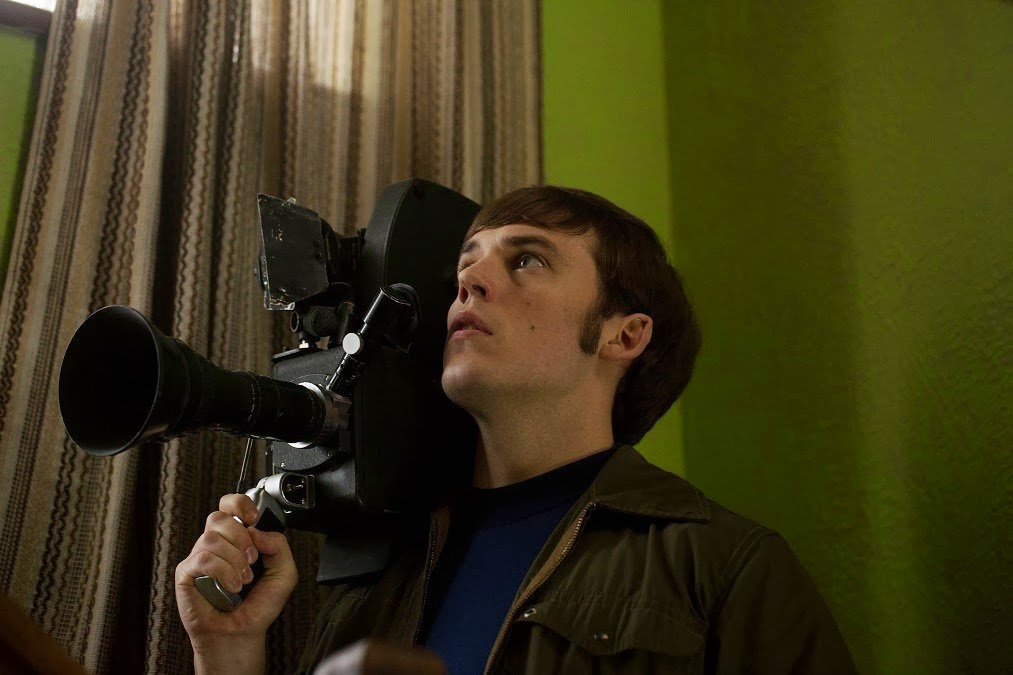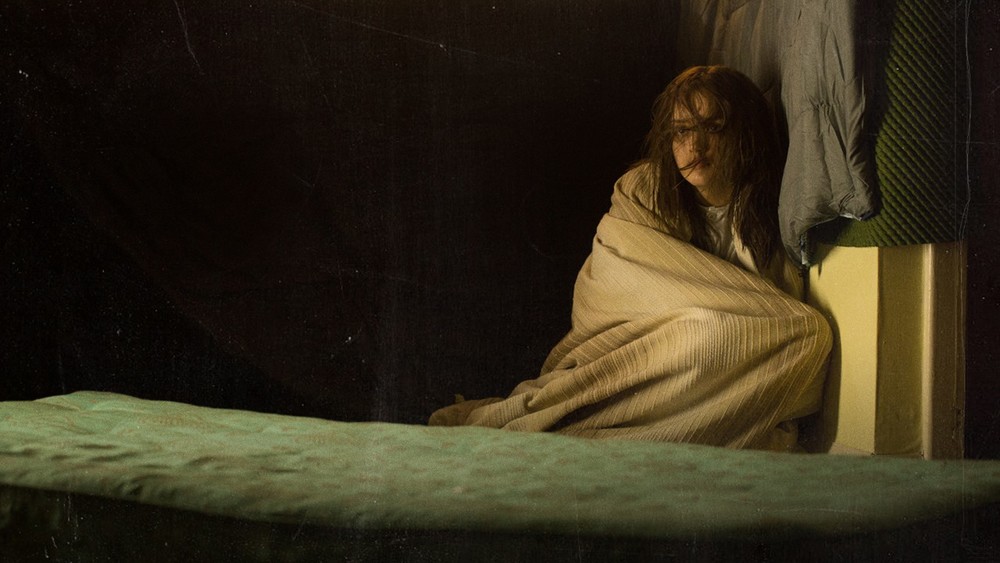Will the Quiet Ones Make a Big Noise at the Box Office?
Director: JOHN POGUE/2014
 This weekend we have yet another entry in the “documentary-styled footage” category of horror films with the new movie The Quiet Ones. In 1974, Professor Joseph Coupland (Jared Harris-Mad Men, Sherlock Holmes: Game of Shadows) is teaching a class at Oxford where he shows a film of a young boy who has drawn the picture of a man that the boy claims is real and who manifests itself through strange occurrences. Professor Coupland believes that such manifestations are not anything spiritually or paranormally related. He is a believer in science. To him, they are manifestations of the mind and if these individuals are able to transfer this negative energy that causes these manifestations into an object of some kind, then the patient will be rid of them and thus be cured. He believes that if they are able to help one, then they are able to save everyone from such afflictions.
This weekend we have yet another entry in the “documentary-styled footage” category of horror films with the new movie The Quiet Ones. In 1974, Professor Joseph Coupland (Jared Harris-Mad Men, Sherlock Holmes: Game of Shadows) is teaching a class at Oxford where he shows a film of a young boy who has drawn the picture of a man that the boy claims is real and who manifests itself through strange occurrences. Professor Coupland believes that such manifestations are not anything spiritually or paranormally related. He is a believer in science. To him, they are manifestations of the mind and if these individuals are able to transfer this negative energy that causes these manifestations into an object of some kind, then the patient will be rid of them and thus be cured. He believes that if they are able to help one, then they are able to save everyone from such afflictions.
Professor Coupland runs this latest experiment on a young girl named Jane Harper (Olivia Cooke-The Bates Motel) who calls her manifestation character Evie. With the help of two graduate students, Krissi and Harry (played by Erin Richards and Rory Fleck-Byrne), they conduct various scientific experiments on Jane Harper in order to measure the manifestations of Evie and discover a way to rid Jane of this “invented” malevolent being. In order to bring even greater credibility to their experiment to cure this tortured girl, they enlist the services of a cameraman by the name of Brian McNeil (Sam Claflin-The Hunger Games: Catching Fire) who is a skeptic by nature and unsure if he has any core beliefs when it comes to the supernatural.

The setting of 1974 works well as the dated camera equipment that Brian McNeil uses to film the experiment creates a creepy feel of its own with its grainy clarity, and darker shades. As with last year’s The Conjuring, I think we are starting to see more period pieces in horror. This dated feel allows the director, John Pogue, to create more tension within the frames of the documented footage as it doesn’t have the high definition we are used to seeing. This causes the film to rely more on loud sounds and off screen occurrences, that we only see the aftermath for, to keep the tension high. The film does a good job of not showing too much too soon, which keeps the story moving for 2/3rds of the way through.
The last 1/3 of the film is where it really begins to unravel, though the seeds of its destruction are planted early on. Where the film falls flat is when we begin to start understanding the source of the manifestations and what might actually be going on. With these reveals, the set up becomes less plausible, and the story loses its main impetus. The backstory that is spurring on much of these events is explained, but we are given no emotional connection to it, nor do we see it as anything that would be considered fear-inducing. Because of this, the film becomes another generic horror film where things go bump in the night just so we’ll have a horror film to watch. The Conjuring is an example of a modern, period-piece of a horror film that had the means justify the ending thus creating a cohesive storyline. Its explanations made sense within the context of the rest of the movie. The Quiet Ones often feels like it is making things up as it goes along, which perfectly falls in line with Professor Coupland’s approach to his experiment to cure this girl.
Very little effort is made to flesh out some deeper interpersonal relationship drama that is building among the main characters, or to provide a real sense of empathy for the emotions that they are feeling and displaying. The ending of the film is almost laugh-inducing and a real letdown after some decently tense moments. There is no real payoff for what we’ve been through in the story. Some of the explanations for the events are too easily written off as some naturally occurring phenomenon, but really they are weak explanations because they are stolen from the Ghostbuster movies which occured 10 years after this film’s setting.

That being said, in just one week’s time, we are once again presented a choice in a film between Science vs. the supernatural (Last week, in Transcendence, it was more of Science vs. Religion). Professor Coupland’s involvement as a scientist will only allow him to consider what he can explain naturally using the technology of the time. Any other plausible explanations, given the events he’s witnessed, are summarily dismissed in the name of science. This of course flies in the face of true science which adjusts its hypothesis and presuppositions as the facts change. Professor Coupland is obsessed for reasons that will be made clear as the movie progresses.
And while everyone in the cast gives a good faith effort, ultimately this film falls flat. The camera-footage angle is way played out by now, especially as we anticipate a sixth film in the Paranormal Activity series later this fall. The script plays too loose on character development and the twists of the film need to be more bold in its challenge to the audience if we are to decide if we truly believe in the supernatural or not. The “true story” this film is inspired by actually has very little resemblance to the movie of The Quiet Ones. But by putting on the disclaimer, it is simply studio pandering to give the story more credibility that it actually deserves.
While there are some genuine scares and tension, ultimately it is not enough. Fans of horror films will be bored with the overrall story, and will find the ending laughable and ultimately forgettable. It plays it too safe in order to fit into the PG-13 rating. And while The Quiet Ones hopes to make a lot of noise this weekend, ultimately, I think its going to be a “quiet one”!

